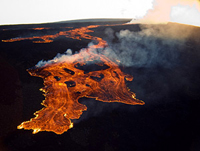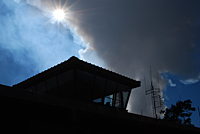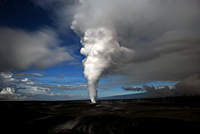

Mauna Loa's Silver Anniversary
Mauna Loa, the most voluminous active volcano on Earth, has erupted 33 times in the past 150 years—most recently in 1984. During that eruption, which began on March 25, fast-moving lava flows advanced to within 4 miles of Hilo city limits in a matter of days. To acknowledge the 25th anniversary of Mauna Loa's last eruption, HVO is presenting two talks and three community programs to present information on the eruptive history and current status of the volcano, and how its activity is monitored. Mauna Loa has been quiet for a quarter-century, and based on the current lack of shallow seismicity that typically precedes volcanic activity by months or years, it is not expected to erupt any time soon. But, Mauna Loa will erupt again—and chances are that it will be within your lifetime. Please attend one or more of the programs listed below to learn about the massive volcano in your backyard. There's no time like the present to prepare for the future.
Mauna Loa: The World's Largest Volcano After Dark in the Park Talk 7:00 p.m. Kīlauea Visitor Center in Hawai'i Volcanoes National Park
Tuesday, March 24
Saturday, March 28
Saturday, March 28
Saturday, April 4 |
Archive of previous
feature stories
|





